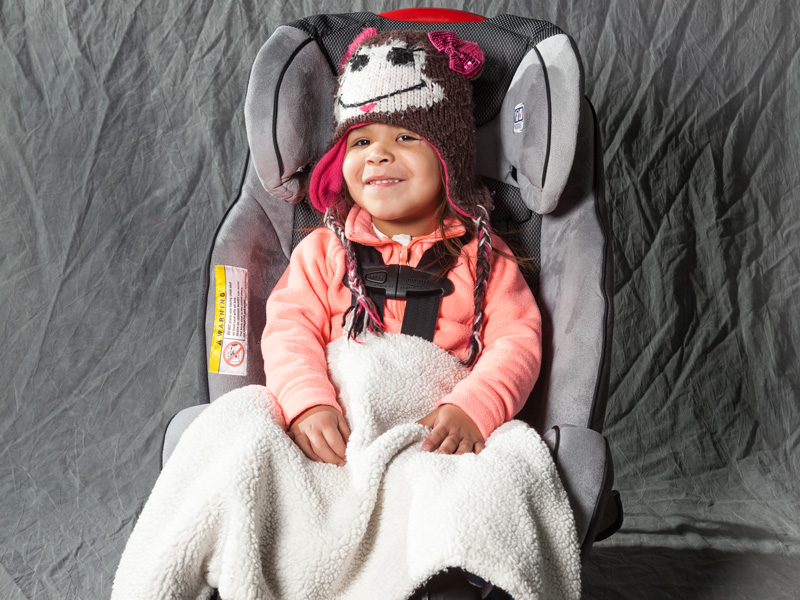The wind is howling, the snow is falling, and it’s time to bundle up with mittens, hats and winter coats. But if you have a little one at home, they have their own winter safety guidelines for inside, outside and cars.
Properly dressed for winter
To keep children warm, it’s best to dress them in layers. This allows parents to remove or add layers depending on the temperature, so you can avoid the child overheating or getting too cold.
“People tend to overdress babies. They have a really good circulatory system. So if you are hot, then they are likely hot,” says Jody Jordet, a community life educator at Sanford Health. “Children are comfortable in what a parent would be wearing. For babies and toddlers, one more layer can be added as needed, so have your baby in a T-shirt or outfit with a onesie underneath.”
When headed outside for some outdoor fun, dress your child in layers with a waterproof outside layer. This will keep your child dry and warm.
Avoid winter safety blunders
Keep the inside of the house safe during winter as well. Get to your child’s level and look around for any risks, specifically focusing on hot drinks, fire places and other winter-specific risks.
- Cover hot drinks and keep out of the reach of little fingers.
- Turning stove handles in or have a zone around oven that young children cannot access.
- If you use candles, remember to keep them out of reach.
Winter car seat safety
Car seats are designed to fit snugly around a child’s body to protect him or her in case of an accident. In winter, this can become more challenging, as there needs to be a balance of keeping your child safe with also keeping your child warm.
Schedule a car seat fitting or checkup:
Jordet says, “Any time a child is in a five-point harness, thinner layers — nothing bulkier than a polar fleece or properly fitted hooded sweater — should be worn. Properly fitted clothing is key.”
If a child is wearing a bulky winter coat, the car seat straps will not fit properly, leaving your child vulnerable and at risk of injury in the event of a crash. This does not mean your child is unable to wear a coat in the car; it just means he or she needs to wear the right one.
“I always tell people to have a proper car seat safe layer for traveling and a different coat for playing outside, so a car coat and a play coat,” says Jordet.
Light fleece is thin enough to fit properly but thick enough to keep your child warm. If you feel your child still will be cold, put him or her in the seat with the harness fastened. Then, take the child’s heavy winter coat or a blanket to cover your child for car rides.
“Your infant can be kept in his or her normal clothing with socks, a hat and a shower cap-style car seat cover to stay plenty warm when traveling,” explains Jordet. “If the child is under age two, fleece snowsuits are a great option when traveling. They keep a child warm from head to toe.”
Carbon monoxide
Make sure your home has a carbon monoxide alarm on every level, especially near sleeping areas. In addition, make sure to keep them at least 15 feet away from fuel-burning appliances. When warming up your vehicle, don’t forget to remove it from the garage after starting it as it’s extremely dangerous to have the engine running inside a garage.
Sleep safety
With cold nights, it may seem like a good idea to make your baby’s crib cozier with extra blankets, but the soft bedding can block their airways during sleep. Instead, if you’re worried about keeping your baby warm at night, try using a sleep sack.
Winter sports
Kids love to push the limits when skiing or snowboarding. Make sure they wear helmets and other proper gear to keep them safe if they fall on the slopes. In addition, remind kids to stay hydrated as they might not be as inclined to drink water in the cold.
Fire safety
Create and practice a home fire escape plan with two ways out of your house in case of a fire. Also, remember to keep space heaters at least three feet away from anything that can burn.
Learn more
- Infant colds: What’s normal and what’s not
- Is it a cold or RSV? Know when to call your child’s doctor
- Should my child be in a booster seat?
…
Posted In Children's, Health Information, Healthy Living, Parenting
